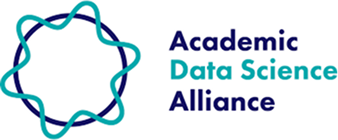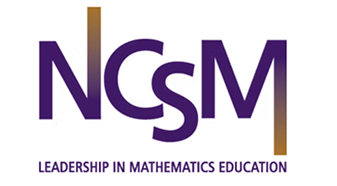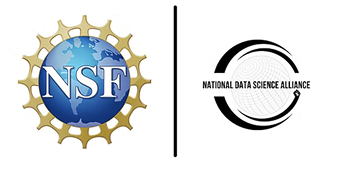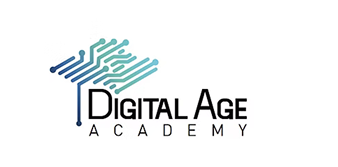Priors & updates
When encountering new data, integrate probabilistic thinking into everyday situations by explicating prior assumptions and the impact of new data / evidence on those assumptions.
K–2 Competencies
Discuss a guess or hypothesis before an investigation, compare the initial guess to findings, and informally express how new data changes a prior guess.
Classroom resources
Data Science Starter Kit Module 4: Drawing Conclusions - Interpreting Problems and Results
Welcome to one of the most critical skills in data science—learning how to draw valid conclusions from data and understanding what those conclusions can and cannot tell us. This module focuses on the thinking skills that separate good data science from misleading claims.🔗
Interpreting Problems and Results isn’t about complex statistical tests or advanced mathematics. It’s about developing the intellectual honesty and critical thinking skills to say, “Based on this data, here’s what we can reasonably conclude, here’s what we’re not sure about, and here’s what we still need to investigate.”
3–5 Competencies
Record a guess about the world, compare the initial assumption to new findings from data, and assess the extent to which the original assumption should change in light of new evidence.
Classroom resources
Data Science Starter Kit Module 4: Drawing Conclusions - Interpreting Problems and Results
Welcome to one of the most critical skills in data science—learning how to draw valid conclusions from data and understanding what those conclusions can and cannot tell us. This module focuses on the thinking skills that separate good data science from misleading claims.🔗
Interpreting Problems and Results isn’t about complex statistical tests or advanced mathematics. It’s about developing the intellectual honesty and critical thinking skills to say, “Based on this data, here’s what we can reasonably conclude, here’s what we’re not sure about, and here’s what we still need to investigate.”
6–8 Competencies
Recognize that an assumption should change somewhat, but may not need to change entirely, based on the "strength of" or degree of confidence in new evidence.
Connect previous assumptions about a problem to the level of certainty in a finding by using the terms “prior assumption,” “new data/evidence," and “my updated assumption.”
Classroom resources
Blinking Out Activity by DataClassroom
The purpose of thislesson is to help students understand how long-term ecological data collectionenables scientists to identify environmental changes and population trends thatwould be invisible with short-term studies. Students will analyze real fireflypopulation data to make evidence-based claims about species decline whilelearning about sampling effort, data collection challenges, and the scientificmethod in environmental research.
Data Science Starter Kit Module 4: Drawing Conclusions - Interpreting Problems and Results
Welcome to one of the most critical skills in data science—learning how to draw valid conclusions from data and understanding what those conclusions can and cannot tell us. This module focuses on the thinking skills that separate good data science from misleading claims.🔗
Interpreting Problems and Results isn’t about complex statistical tests or advanced mathematics. It’s about developing the intellectual honesty and critical thinking skills to say, “Based on this data, here’s what we can reasonably conclude, here’s what we’re not sure about, and here’s what we still need to investigate.”
9–10 Competencies
Analyze how confirmation bias and availability bias influence the way individuals evaluate new information, especially regarding their existing beliefs and assumptions.
Relate assumptions about a problem to the certainty of findings based on new evidence.
Classroom resources
Coffee Filter Parachutes by DataClassroom
The purpose of this lesson is to help students apply engineering design principles and data analysis to solve real-world problems by analyzing parachute performance data and making evidence-based recommendations for different stakeholders. Students will use physics concepts, mathematical modeling, and statistical analysis to evaluate competing designs and communicate technical recommendations to diverse audiences with different performance requirements.
Data Science Starter Kit Module 4: Drawing Conclusions - Interpreting Problems and Results
Welcome to one of the most critical skills in data science—learning how to draw valid conclusions from data and understanding what those conclusions can and cannot tell us. This module focuses on the thinking skills that separate good data science from misleading claims.🔗
Interpreting Problems and Results isn’t about complex statistical tests or advanced mathematics. It’s about developing the intellectual honesty and critical thinking skills to say, “Based on this data, here’s what we can reasonably conclude, here’s what we’re not sure about, and here’s what we still need to investigate.”
11–12 Competencies
Summarize previous assumptions and potential updates in written conclusions from a data analysis, and identify any known contradictory findings to mitigate confirmation bias (psychology).
Describe Bayes Theorem by explaining how it relates to conditional probability, which includes the probability of an event occurring, the probability of that event given the evidence is true, and the probability that the evidence itself is true.
Apply the logic of Bayes Theorem to determine whether a data-based claim in the media was accurately explained.
Classroom resources
Gene Expression in Stem Cells by DataClassroom
The purpose of this lesson is to help students apply advanced statistical analysis and bioinformatics approaches to real genomic research data, investigating gene expression differences between specialized cells and stem cells. Students will conduct sophisticated hypothesis testing, evaluate data distributions, perform multiple comparison analyses, and interpret biological significance of statistical findings in the context of cutting-edge regenerative medicine research.
Data Science Starter Kit Module 4: Drawing Conclusions - Interpreting Problems and Results
Welcome to one of the most critical skills in data science—learning how to draw valid conclusions from data and understanding what those conclusions can and cannot tell us. This module focuses on the thinking skills that separate good data science from misleading claims.🔗
Interpreting Problems and Results isn’t about complex statistical tests or advanced mathematics. It’s about developing the intellectual honesty and critical thinking skills to say, “Based on this data, here’s what we can reasonably conclude, here’s what we’re not sure about, and here’s what we still need to investigate.”
Advanced Competencies
Apply Bayes Theorem to an example result in an academic research finding or discussion.
Explain Bayes Theorem in formal conditional probability statements: P(A|B) = (P(A) * P(B|A)) / P(B), where A is the event in question and B is the event of new evidence related to A.
Classroom resources
Support other teachers by sharing a resource
Do you have a lesson plan, video, or tip that could help others teaching this topic?
Share feedback on the Learning Progressions
Your feedback helps us improve these progressions for teachers around the world. Thank you!
Share feedback on the Learning Progressions
Your feedback helps us improve these progressions for teachers around the world. Thank you!
Share a classroom resource
Suggesting a resource helps students around the world learn essential data science skills.










.png)














